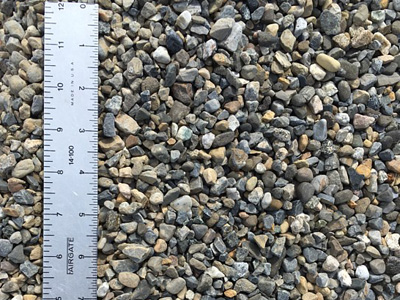_Mistakes to Avoid When Choosing Stone and Aggregates for Your Yard_
 Stone and aggregates can enhance the beauty and functionality of any outdoor space, but choosing the wrong materials can lead to issues down the line. Size, color, texture, and durability affect how well these materials work for landscaping projects. Selecting the right ones requires careful planning to complement the space while meeting practical needs.
Stone and aggregates can enhance the beauty and functionality of any outdoor space, but choosing the wrong materials can lead to issues down the line. Size, color, texture, and durability affect how well these materials work for landscaping projects. Selecting the right ones requires careful planning to complement the space while meeting practical needs.
A poor choice can lead to drainage problems, mismatched aesthetics, or materials that fail to withstand the test of time. Knowing what to avoid helps homeowners and landscapers make informed decisions, ensuring their yards remain both visually appealing and structurally sound.
Common Mistakes When Selecting Stone and Aggregates
As mentioned, selecting the wrong materials can lead to costly replacements or design issues. Avoiding these common mistakes ensures a successful and long-lasting landscape:-
Ignoring Drainage Needs - Certain types of stone and aggregates allow water to flow through, while others create a more compact surface that can lead to pooling or erosion. Using the wrong material in areas that require proper drainage can result in standing water, flooding, or damage to nearby structures. Permeable aggregates are well-suited for pathways and driveways, while compacted aggregates are better suited for areas that require more stability.
Choosing the Wrong Size - Different landscaping projects require different sizes and selecting the incorrect one can affect both appearance and functionality. Large stones may not work well for pathways as they create an uneven surface, while gravel that is too fine can shift too easily. Matching the stone size to the intended purpose ensures durability and ease of use.
Overlooking Maintenance Requirements - Some stones and aggregates require more maintenance than others. Lighter-colored ones may stain easily, while smaller gravel can scatter and require frequent refilling. If regular upkeep is a concern, selecting materials that require minimal maintenance can save time and effort.
Ignoring the Aesthetic Impact - While functionality is important, the visual impact of these products plays a key role in overall landscape design. Clashing colors or inconsistent textures can disrupt the look of an outdoor space. Considering how the material blends with existing features, such as plants, hardscaping, and outdoor structures, helps create a cohesive appearance.
Forgetting About Durability - Different stones have varying levels of strength, and choosing one that isn’t suited for high-traffic areas can lead to premature wear. Soft or porous stones may erode quickly in areas exposed to heavy foot traffic or constant moisture. Harder materials like granite or crushed stone tend to last longer in demanding conditions.
Misjudging the Amount Needed - Underestimating or overestimating the material needed can cause unnecessary expenses and delays. Running out of materials before completing a project may lead to inconsistencies if additional materials do not match perfectly. Calculating the correct amount based on project dimensions prevents shortages and excess waste.






